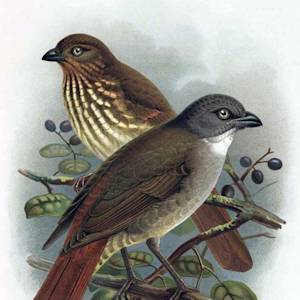Emperor penguins
2023 CE • Antarctica
"The emperor is the largest living penguin species standing around 115cm tall . . . Emperor’s are well adapted to thrive in the freezing conditions of the Antarctic. To preserve heat, they have a dense double layer of feathers – about 70 feathers per square inch – large fat reserves and, proportionally, smaller beaks and flippers compared to other penguins . . . Populations have declined by up to 50% in some places and one colony off the Antarctic Peninsula has disappeared completely. The biggest threat to them right now is climate change due to changes in the sea ice they depend on . . . Emperor penguins are a vital part of the Antarctic food chain – they eat creatures like squid and small fish, and are an important source of food for predators like leopard seals and large sharks." If emperor penguin populations continue to dwindle, it will have cascading effects on the delicate Antarctic ecosystem, leading to imbalances in the food chain, decreased biodiversity, and potential disruption to the overall functioning of the marine ecosystem.
"Emperor Penguins – The Icons of the Antarctic," World Wildlife Fund.
Image: Christopher Michel, CC BY 2.0, via Wikimedia Commons


Learn about Maya Lin’s fifth and final memorial: a multi-platform science based artwork that presents an ecological history of our world - past, present, and future.

Discover ecological histories and stories of former abundance, loss, and recovery on the map of memory.

Learn how we can reduce our emissions and protect and restore species and habitats – around the world.

See how art can help us rethink the problems we face, and give us hope that each one of us can make a difference.

Help make a global memorial something personal and close to home. Share your stories of the natural world.

